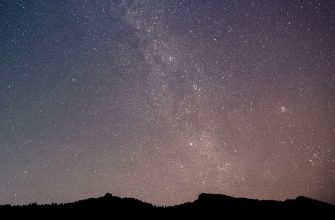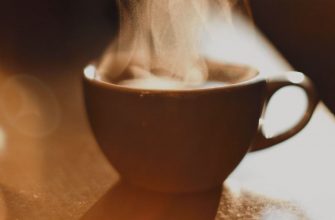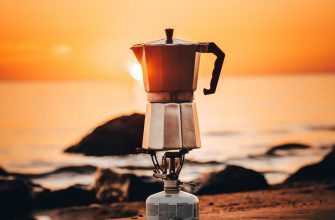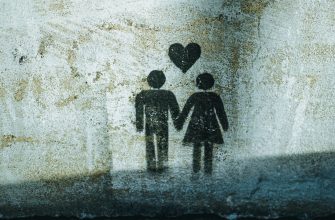Топик на тему Volcanoes на английском языке
When a volcano erupts hot gases and liquid rock come up to the surface from inside the earth. The material sometimes slides down mountains as lava or is hurled into the air as ash or small rocks. Volcanoes often destroy the land around them completely. Gases from eruptions can keep sunlight from reaching the earth and darken the sky for years. Volcanoes also build up new islands and mountains and make the soil a good place for crops to grow.
Where are volcanoes located?
The earth’s crust is made up of sections or plates. They always move and at places where they get together they collide or slide on top of each other.
90% of all volcanoes are located around the edges of the Pacific Ocean. The Pacific coasts of Asia, North America and South America form a big circle, which is called the Ring of Fire.
Sometimes volcanoes are found in places where plates move away from each other. In the Atlantic Ocean, for example, a long range of underwater mountains forms the border between two plates. Iceland is a gigantic volcanic island that has come up to the surface from this mountain range.
Other volcanoes form in the centre of plates, where magma comes up from deep inside the earth and breaks through the crust. Such areas, like the Hawaiian Islands, are called hot spots.
How volcanoes are formed
Hot liquid rock, called magma, makes up the inner part of the earth. When it rises to the surface it cools down and sometimes the flow of magma stops in the inner part. In other places, magma unites with gas and creates chambers below the surface of the earth. When the gas pressure gets higher, magma becomes lighter and it spews out of openings, cracks or vents at the surface.
Volcanic eruptions
When a volcano erupts three types of material come to the surface: lava, small pieces of rock or ash, and gas.
Magma that spreads out of a volcano slowly is called lava. It can reach temperatures of up to 1,200° C and glows red to white when it flows. In most cases, lava mixes with steam and gas. All types of lava contain silicon and oxygen. As lava moves down a volcano’s slope it cools down and becomes harder, creating very rough blocks or rock.
Small pieces of rock erupt from a volcano when magma is trapped inside and cannot get out. Gas pressure in the magma chambers gets high and suddenly material is blown out and thrown high into the sky.
Often, the pieces of rock are so tiny that they form ash or dust. Strong winds can blow volcanic dust hundreds or thousands of kilometers away from the place of eruption.
Types of volcanoes
The two most common types of volcanoes are stratovolcanoes and shield volcanoes.
Stratovolcanoes are formed like a cone. The base is rather flat and they become steeper towards the peak. A crater usually forms at the top of the volcano. Such volcanoes develop when lava and ash come up from the inner part of the earth and build up layers. First, lava spreads over the surface of the volcano, cools down and becomes hard. Then pressure builds up underneath the layers of lava and ash and other materials are blown out. One of the most famous stratovolcanoes is Mount Fuji in Japan.
Shield volcanoes are dome shaped mountains which are flatter than stratovolcanoes and built of lava flows. They may start on the sea floor and become so large that islands can rise far above sea level. The Hawaiian mountains were formed this way. The islands, which rise about 10,000 meters above the ocean floor, are the world’s most massive volcanoes.
Volcanoes also create holes, called craters and calderas. Calderas are larger than craters and are formed when parts of the volcano collapse. Sometimes these holes are filled with water and form a lake.
Volcanic activity
Some volcanoes are active. They erupt very often, like Italy’s Mount Etna, which erupts every few years. Inactive volcanoes have not erupted for a long time, but scientists warn that they may become active some day. Extinct volcanoes, like Mount Kenya in Africa, will probably never erupt any more.
Volcano experts do their best to warn the population when a volcano may erupt. Sometimes smaller earthquakes or clouds of gas from vents tell observers that a volcano could erupt soon. Most of the time, however, there are no signs at all.
Effects and benefits of volcanoes
Although volcanoes may cause a lot of damage and big eruptions can kill many people, there are also advantages of volcanic activity.
Volcanic lava and ash spreads over the slopes of mountains and creates good farmland. Volcanic rock is used to build roads, make special tools and ornaments.
The heat that is formed underneath a volcano is called geothermal energy. Hot water that lies below the surface is used to heat homes and greenhouses. Countries with many volcanoes like Japan, Iceland or Italy use this kind of energy to produce electric power.
Вулканы столь же опасны, сколь и величественны — текст про вулканы на английском
Вулканы столь же опасны, как и величественны. Свыше 50 извержений ежегодно происходят на нашей планете. Что вызывает образование и извержение вулканов, и где они скорее всего произойдут? Читайте об этом на английском языке с переводом на русский.
Вулканы планеты
Our planet has a violent soul. Majestic and often destructive volcanic explosions are collected imagination. Krakatoa, mount Saint Helens, Etna, Eyjafjallajökull [ei-ya-fyat-LA-yer-kitle] Эйяфьядлайёкюдль — вулкан в Исландии … The images simultaneously strike fear and awe in our hearts. But how did these giant mountains form and where does their destructive force come from?
Магма — кровь Земли
At least 50 eruptions rock the Earth each year meaning our planet is literally bursting a part of the things. The Earth’s crust is made up of about 17 slabs of land called tectonic plates, that float on a super heated magma that makes up most of the planet’s interior. Magma is Earth’s lifeblood turning restlessly beneath the crust. And wherever it can it’s trying to burst through. When magma reaches the surface, then, a volcano is formed.
Активные вулканы
Our planet is home to some 500 active volcanoes. While some volcanoes like those in Hawaii break through a thin point in the crust called a Hot spot, the vast majority of volcanoes occur on active fault lines where tectonic plates meet. The most volatile region is the Ring of Fire, a geological fold belt that rims the Pacific Ocean and holds roughly 75% of all the Earth’s volcanoes.
Две формы вулканов
Typically, volcanoes take one of two forms. Shield volcanoes wide and broad with lava usually slowly oozing out of them, and composite or strato volcanoes steeper and more violent. When hot liquid magma reaches the surface whether in a slithering flow or a booming eruption we call it lava. Though molten lava may seem threatening, it’s not known to move quickly. A volcano’s pyroclastic flow is far more deadly. Its poisonous ash cloud can race down the slope of a volcano like a bullet train obliterating everything in its path at speeds topping 100 miles per hour. It’s what stopped the residents of Pompeii dead in their tracks.
`
Вулканы — часть жизненного цикла планеты
But despite the volcanoes brutal destruction it is also a force of beauty and rebirth for the planet. Lava creates new lands where life can flourish. Like it or not volcanoes are part of the planet’s life cycle. As the Earth continues to explode, gurgle, and slither its molten lava out, we must learn to live side-by-side with its awesome power.










